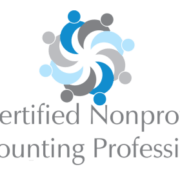Can you deduct business travel when it’s combined with a vacation?
At this time of year, a summer vacation is on many people’s minds. If you travel for business, combining a business trip with a vacation to offset some of the cost with a tax deduction can sound appealing. But tread carefully, or you might not be eligible for the deduction you’re expecting.
General rules
Business travel expenses are potentially deductible if the travel is within the United States and the expenses are “ordinary and necessary” and directly related to the business. (Foreign travel expenses may also be deductible, but stricter rules apply than are discussed here.)
Currently, business owners and the self-employed are potentially eligible to deduct business travel expenses. Under the Tax Cuts and Jobs Act, employees can no longer deduct such expenses. The potential deductions discussed below assume that you’re a business owner or self-employed.
Business vs. pleasure
Transportation costs to and from the location of your business activity may be 100% deductible if the primary reason for the trip is business rather than pleasure. But if vacation is the primary reason for your travel, generally none of those costs are deductible.
The number of days spent on business vs. pleasure is the key factor in determining whether the primary reason for domestic travel is business:
- Your travel days count as business days, as do weekends and holidays — if they fall between days devoted to business and it would be impractical to return home.
- Standby days (days when your physical presence is required) also count as business days, even if you aren’t called upon to work those days.
- Any other day principally devoted to business activities during normal business hours also counts as a business day.
You should be able to claim business was the primary reason for a domestic trip if business days exceed personal days.
Deductible expenses
What transportation costs can you deduct? Travel to and from your departure airport, airfare, baggage fees, tips, cabs, etc. Costs for rail travel or driving your personal car are also eligible.
Once at the destination, your out-of-pocket expenses for business days are fully deductible. Examples of these expenses include lodging, meals (subject to the 50% disallowance rule), seminar and convention fees, and cab fare. Expenses for personal days aren’t deductible.
Keep in mind that only expenses for yourself are deductible. You can’t deduct expenses for family members traveling with you — unless they’re employees of your business and traveling for a bona fide business purpose.
Substantiation is critical
Be sure to accumulate proof of the business nature of your trip and keep it with your tax records. For example, if your trip is made to attend client meetings, log everything on your daily planner and copy the pages for your tax file. If you attend a convention or seminar, keep the program and take notes to show you attended the sessions. You also must properly substantiate all of the expenses you’re deducting.
Additional rules and limits apply to the travel expense deduction. Please contact us if you have questions.
© 2018











